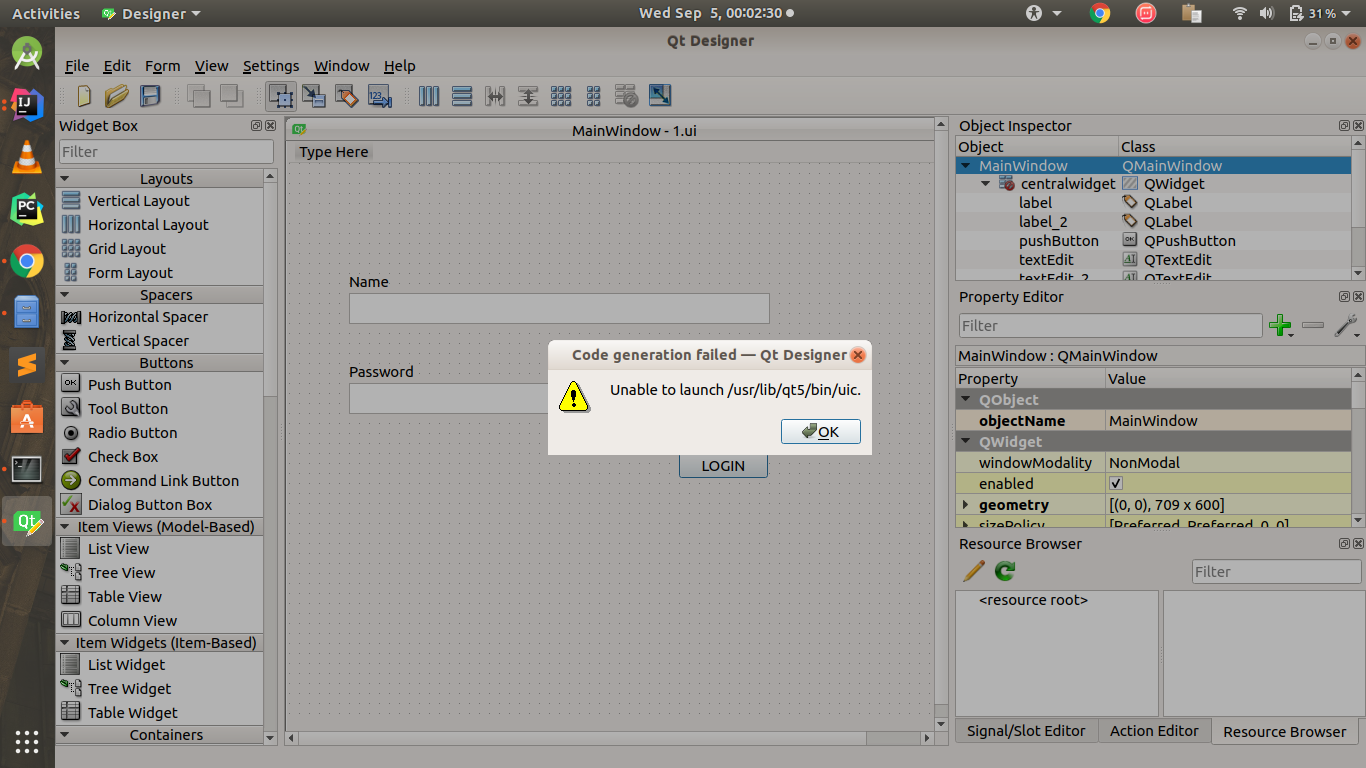
Install pyqt5 widgets install#
This is a small price to pay in 'overhead' for more smooth development later.Download and install latest python exe from Yes, at first it will be a lot of effort, but once you have set up all the pointers, you no longer need to worry about the GUI changing (regarding you keep the names of widgets the same). These are only the basics but are great to build up from. show () def printButtonPressed ( self ): # This is executed when the button is pressed print ( 'Input text:' + self. printButtonPressed ) # Remember to pass the definition/method, not the return value! self. QPushButton, 'printButton' ) # Find the button self. QMainWindow ): def _init_ ( self ): super ( Ui, self ). This means to get our button named "printButton", we can access it using self.printButton within the same class that uic.loadUi('basic.ui', self) was called in after it has been called (technically we can call that on whatever self is).įrom PyQt5 import QtWidgets, uic import sys class Ui ( QtWidgets. When uic.loadUi('basic.ui', self) is called, the names of the widgets will be used to create pointers to the widgets themselves. When I say pointers, I mean a variable that we can use to access this widget and modify it. Now that each widget has a name attribute, we can get pointers of these objects.

You don't have to look at the XML, seeing/modifying it in the designer is enough. Set this to what you want the object to be called and you should see this in the XML when you save the file. To set these names, when clicking on an object in the designer, the property editor on the left provides a field called objectName In the XML you can see the 5 widgets I created have friendly name attributes these names can help us identify the widgets. ui file in the Designer or in notepad to see the names I have given each widget. The most important part of getting a pointer to one of these widgets is to give each widget a unique name, preferably something that is friendly to read. Giving Widgets Unique Names to Find Them With When looking at the XML, we can see that there is a centralwidget inside a QMainWindow and inside the centralwidget are the 5 widgets I created. 3 buttons below the input saying "Mode", "Set" and "Clear".A button to the right of this saying "Print Content".This GUI contains 5 widgets that we can see: Once you have the GUI being imported, you now need to identify some pointers for the objects you want to use. You did not inherit the correct class (found in the XML).ui file you are importing does not exist (incorrect reference) Run the script to make sure everything runs, if the GUI that you created appears, congratulations! If not, look back over what you may have missed and READ THE ERROR (I cannot stress this enough).Ī small check-list for things that may go wrong: ui file:įrom PyQt5 import QtWidgets, uic import sys class Ui ( QtWidgets. ui file is XML that contains the layout of the GUI and other things you may have set in the designer application. When saving the GUI you have created, it will be saved as a. Generating the UI FileĪs covered in my original PyQt5 tutorial, install the designer, locate it and use it. Finding the executable can be a bit tough to find if you don't know where packages install so I would recommend reading the other post to help you find it. If you haven't got the designer, you can use python -m pip install pyqt5-tools to install tools that contain the designer. Generally, you can install it using python -m pip install pyqt5 regarding your environment is set up correctly.
Install pyqt5 widgets how to#
Go to my previous tutorial to learn how to install PyQt5. Please be aware that there is a lot more effort when importing it this way and it can be a lot harder to find where errors are occurring. ui file generated by PyQt Designer directly in Python. In this tutorial, I am going to cover a method that allows you to import the. This method also allows for separation of the GUI and logic. py file), it would only have affected the imported file.

Install pyqt5 widgets code#
For demonstration proposes, I had put all code into the Python file generated, but a smarter way to add code would be have been to import the generated file so that when it changes (executed pyuic5 again to create an updated. In my tutorial on Python GUI's with PyQt, I had many people bring up the fact that when modifying the GUI, as soon as pyuic5 is executed again to rebuild the Python file, all original changes will be lost. Giving Widgets Unique Names to Find Them With.


 0 kommentar(er)
0 kommentar(er)
